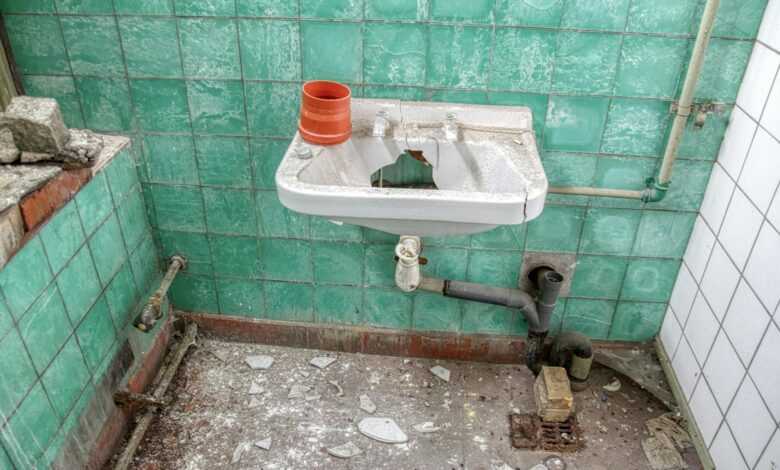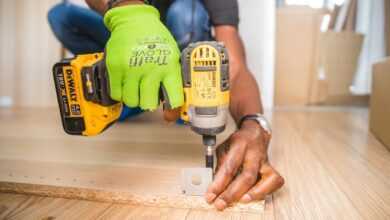
DIY Plumbing Basics: Fixing Leaks and Replacing Taps
Basic plumbing skills can save you a significant amount of money and stress. Knowing how to tackle simple tasks like fixing a leaky tap or replacing a faucet can prevent unnecessary plumber call-outs and reduce water waste. More importantly, understanding your home’s plumbing system gives you confidence and control when something goes wrong, allowing you to quickly address small issues before they become big problems.
In this guide, we’ll explore the fundamentals of DIY plumbing, focusing on common tasks such as fixing leaks, replacing taps, and other simple fixes. Let’s get started with the basics of your home’s plumbing system.
Understanding Your Water Supply
How to Locate and Turn Off Your Main Water Valve
Before you start any plumbing work, it’s crucial to know how to turn off your home’s water supply. This will prevent flooding and ensure you can work safely.
- Locate the Main Valve: The main water valve is usually located near where the water main enters your home, typically under the kitchen sink, in a basement, or near the front of the property. Look for a valve or lever.
- Turn It Off: Turn the valve clockwise (to the right) to shut off the water supply. Once it’s off, open your taps to drain any remaining water from the system before starting your work.
Cold vs. Hot Water Pipes: What to Know
Understanding the difference between your cold and hot water pipes is essential, especially when dealing with taps or showers:
- Cold Water Pipes: These come directly from the main supply and deliver cold water to your taps and appliances.
- Hot Water Pipes: These are connected to your water heater or boiler and supply heated water throughout the house. When replacing taps or fixing leaks, ensure you know which pipe is which, as working on hot water pipes can be riskier due to higher temperatures.
Fixing a Leaky Tap
Common Causes of Leaks
Leaky taps are not only annoying but can also waste a considerable amount of water. The most common causes of a leaky tap include:
- Worn-out washers or O-rings: These rubber components wear down over time, causing water to seep through.
- Loose parts: Over time, parts of the tap can become loose, allowing water to escape.
- Corroded valve seats: Corrosion can build up around the valve seat, the part where the spout meets the base of the tap, causing leaks.
Tools Needed for the Job
- Adjustable spanner (or wrench)
- Screwdriver
- Replacement washers or O-rings (specific to your tap)
- Plumber’s tape (Teflon tape)
- Allen key (if needed)
Step-by-Step Guide to Fixing Different Types of Taps
Fixing a Traditional Compression Tap:
- Turn off the water supply: Shut off the main valve or the isolation valve under the sink.
- Disassemble the tap: Use a screwdriver to remove the handle. You may need an adjustable spanner to remove the nut and gain access to the internal parts.
- Replace the washer or O-ring: Once you have access to the valve, replace the worn washer or O-ring with a new one.
- Reassemble the tap: Put the tap back together in reverse order and turn the water supply back on to check for leaks.
Fixing a Modern Mixer Tap:
- Turn off the water: As with the compression tap, make sure the water supply is off.
- Remove the handle: Most mixer taps require an Allen key to remove the handle.
- Replace the ceramic disc or cartridge: Modern mixer taps often use ceramic discs or cartridges instead of washers. Remove the cartridge and replace it with a new one.
- Reassemble: Reassemble the tap and test for leaks by turning the water supply back on.
Replacing a Tap
How to Choose a New Tap
When choosing a new tap, consider both style and compatibility:
- Type of Tap: Ensure the new tap matches the existing setup, whether it’s a single mixer tap, separate hot and cold taps, or a wall-mounted design.
- Dimensions: Check the tap hole sizes and the spacing between the hot and cold inlets to ensure a good fit.
- Finish: Choose a finish that matches your décor, whether it’s chrome, brass, or brushed steel.
Removing the Old Tap: A Step-by-Step Guide
- Turn off the water supply and open the tap to release any water in the system.
- Disconnect the pipes: Use a spanner to unscrew the nuts that connect the tap to the water supply pipes.
- Remove the tap: Once disconnected, unscrew the tap from the sink or basin. You may need to use a basin wrench for hard-to-reach areas.
- Clean the area: Before installing the new tap, clean the area around the tap hole to remove any old sealant or grime.
Installing the New Tap: Ensuring a Watertight Seal
- Insert the new tap: Fit the new tap into the hole and secure it using the mounting nuts provided.
- Connect the water pipes: Reconnect the water supply pipes using the spanner. Use plumber’s tape around the threads to ensure a tight, leak-proof connection.
- Turn on the water supply: Slowly turn on the water and check for any leaks around the connections.
Other Simple Fixes
How to Unblock a Sink
Blocked sinks are a common issue caused by food debris, soap scum, or hair buildup. Here’s a simple fix:
- Plunger: Use a sink plunger to create suction over the plughole. Push and pull to dislodge the blockage.
- Baking soda and vinegar: Pour a mixture of baking soda and vinegar down the plughole, let it sit for 30 minutes, then flush with boiling water.
- Snake or drain auger: For stubborn blockages, use a drain snake to break up and remove the clog.
Dealing with Low Water Pressure
Low water pressure is often caused by clogged aerators or faulty pressure regulators. To fix it:
- Clean the aerator: Unscrew the aerator from the tap and soak it in vinegar to remove limescale buildup.
- Check the water pressure regulator: If cleaning the aerator doesn’t solve the problem, you may need to check or replace the water pressure regulator.
Fixing a Running Toilet
A constantly running toilet is often due to a faulty flapper or a problem with the fill valve. To fix this:
- Check the flapper: Open the toilet tank and inspect the flapper at the bottom. If it’s worn out, replace it.
- Adjust the float: If the toilet continues to run, adjust the float arm so that the water stops filling below the overflow tube.
When to Call a Professional
While basic plumbing tasks are manageable for most DIYers, there are times when it’s best to call a professional. For example:
- Burst pipes: Attempting to fix a major pipe break can lead to flooding and extensive damage if done incorrectly.
- Gas or boiler issues: Always leave any plumbing work involving gas or boilers to a certified professional.
By mastering a few basic plumbing skills, you can save money and tackle common household problems with confidence. Start with small fixes like repairing a leaky tap or unblocking a sink, and gradually build up your skills for larger projects. With the right tools and knowledge, you’ll be able to handle many plumbing issues on your own.




